#026
The Spread of FabLabs and 3D Printers Began in the 2010s, What’s to Follow?
Hiroya Tanaka
Japanese Color: HIWAMOEGI-iro
#026
Hiroya Tanaka
Japanese Color: HIWAMOEGI-iro
MOVIE

Professor
Faculty of Environment and Information Studies
In recent years, fabrication devices that were originally only available to specialists, such as 3D printers, 3D scanners, and laser cutters, have started to become available for personal use.
The personal fabrication movement began around 2010, and has the potential to completely revolutionize our societies, which are traditionally based around the mass production of items, mass consumption, and the mass production of waste.
These fabrication devices are now connected to the internet, and the ability to share digital design data allows for required items to be produced at the required place and time, in the desired amount, by whoever requires them. What kind of future will this new fabrication ability bring about?
Professor Hiroya Tanaka is researching the evolution of a future which involves digital fabrication. His research is performed from the dual perspectives of technological developments and their practical applications in society.
My research is based around the evolution of a future which involves digital fabrication, examined from the dual perspectives of technological developments (seeds) and their practical applications in society (needs). I’m also putting effort into training entirely new kinds of design engineers who have an understanding of the true essence of this technology and can make full use of it.
From around 2010 onwards, fabrication devices such as 3D printers, 3D scanners, and laser cutters, which were originally only available to specialists, began to become cheaper, smaller, and more compact. This means that even individuals can make use of 3D printers and has led to the creation of an entirely new movement known as “personal fabrication.”
In the midst of this, new trends such as “sharing economies” and “circular economies” are leading to the creation of an entirely new kind of society.
There’s been trends towards both technological progress, and a movement in society towards sharing. FabLab was created at the merging point of these 2 trends. People from surrounding communities come together in FabLab to share digital fabrication devices. This leads to communication amongst these individuals, which also leads to sharing and exchange of manufacturing knowledge and skills. This in turn leads to the creation of solutions for issues these communities face. FabLab is therefore a “Public Workshop.”
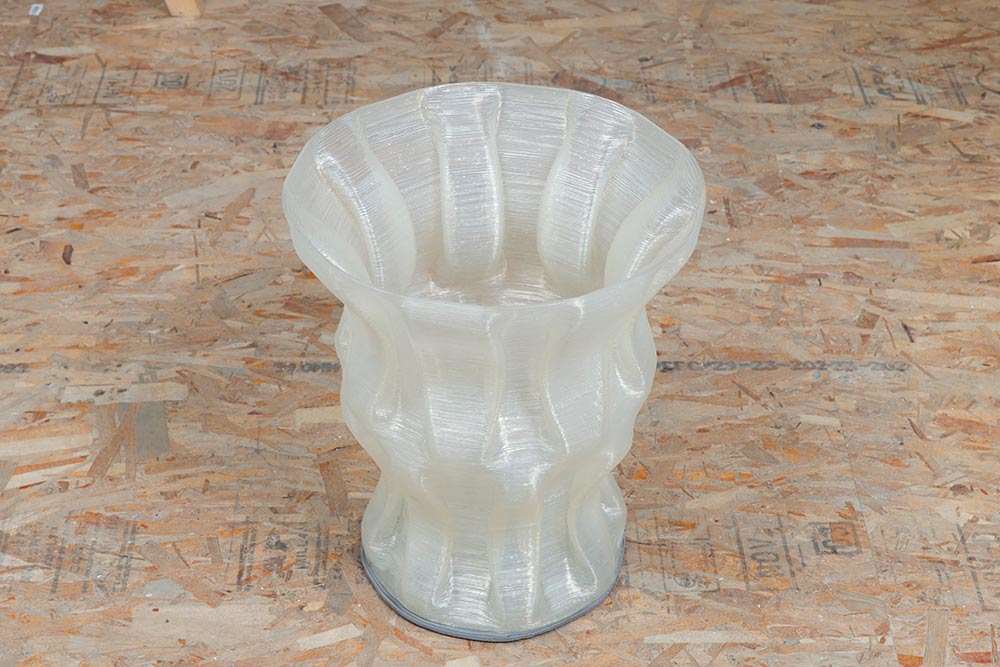

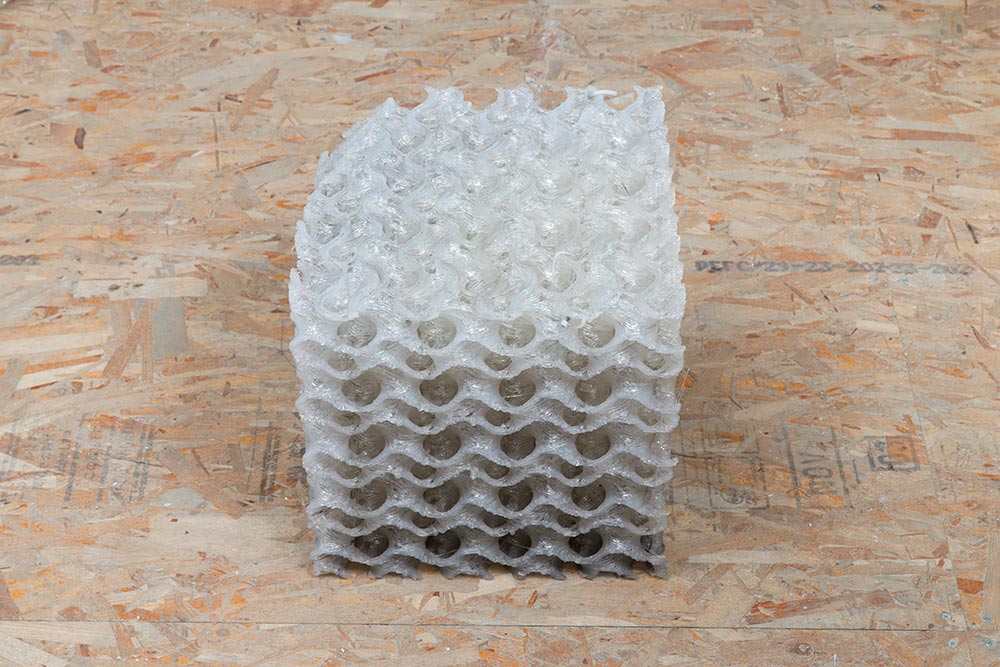
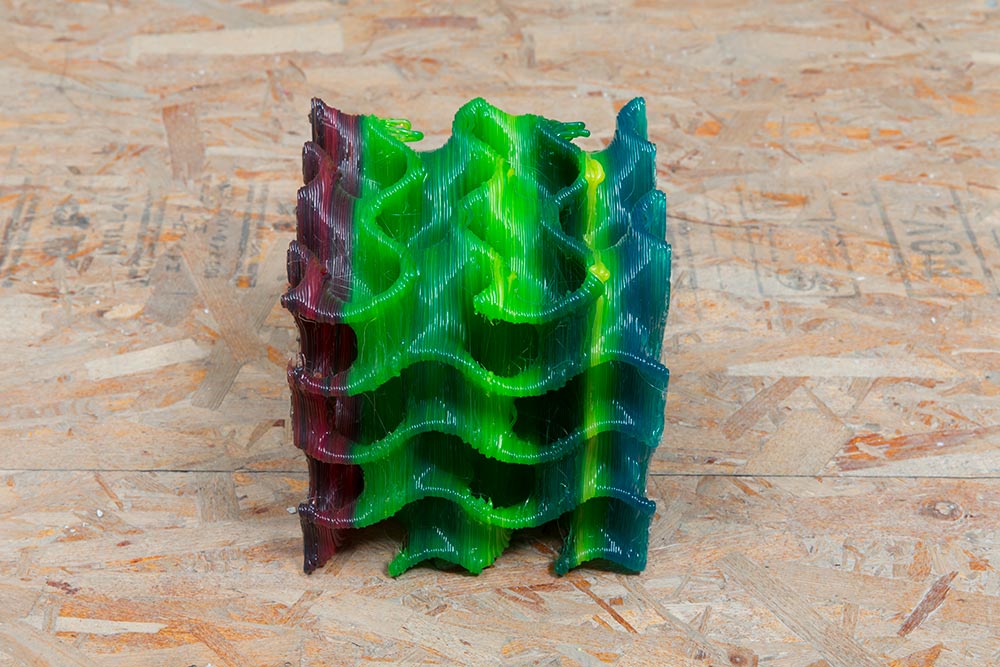
I first started working to help spread FabLab throughout Japan in 2010. There are now more than 300 FabLab locations in the country. I’m aiming for FabLab to become almost like a post office, with at least one FabLab available in every community, thereby creating a distributed network of locations where fabrication can be performed.
FabLabs attract a wide variety of people of all ages and genders, who come together to enjoy creating things in their own individual ways. When I examined what these individuals were doing, I realized that you could break down the item creation process into 3 stages.
The first stage is “Wanting to make something that you can find in a store, by yourself.” For example, using a laser cutter to cut a board to make drink coasters and accessories, and engraving them with your name.
The second stage is “Attempting to create your own design.” For example, using a 3D printer to create a uniquely shaped cup from new materials. At this stage these individuals are just testing the features that digital design makes possible, such as plasticity and complex modeling.
The third stage is “Attempting to create an entirely new object that doesn't exist anywhere else.” It’s not easy to create something which is truly unique and as yet unnamed, from scratch. However, the students in my research lab, who are still on the road to becoming true professionals, will master these skills before graduating. The point of this is to not only master a new technology, but also to place importance on being able to come together in one location to work. These new design engineers become “Fab Masters,” who base their activities around FabLabs while working throughout Japan.
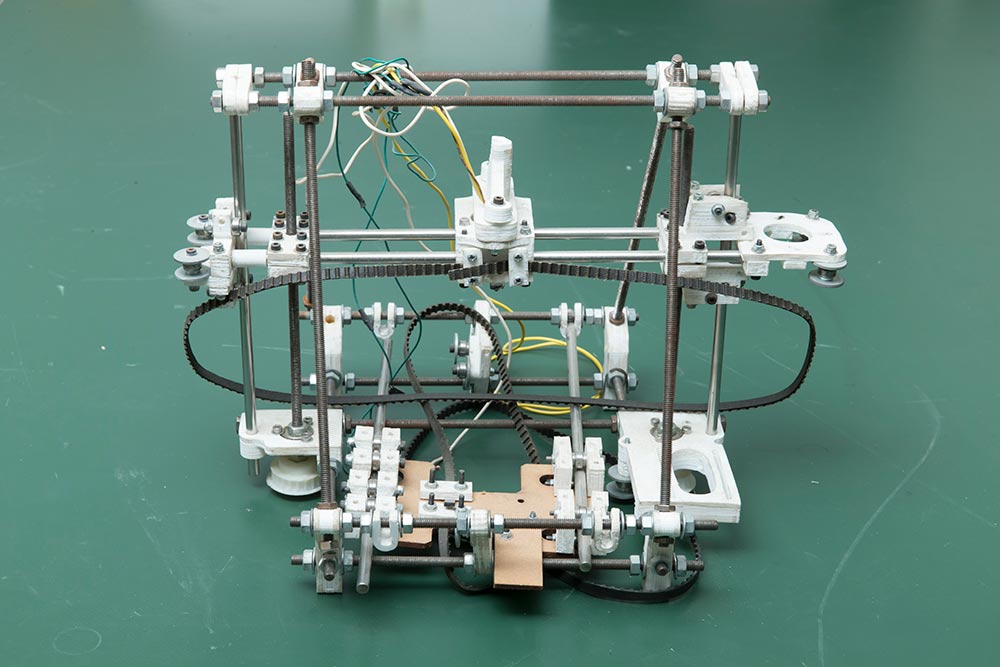
Originally humans would make whatever they needed by hand. That meant that “creation” and “usage” went hand in hand.
However, since the industrial revolution these 2 concepts have become separated, with creation being mass performed in factories. As a result, the concept of “creation” has disappeared from most peoples’ lives. One serious result of this separation is that it has become difficult to come up with ideas and methods for creating entirely new items.
FabLabs, therefore, are places where a movement is occurring to re-link these 2 concepts.
When creating something new, problems need to be specified and defined, then a solution needs to be formed. This is followed by taking stock of the new technologies available, before going on to use the devices at FabLab to experiment with making something over and over again. During this process, conversations are held with other individuals in the FabLab who provide hints and advice regarding how to move forward... it’s this powerful feedback process that leads to the formation of entirely new ideas and helps turn them into actual objects.
With problems such as a decreasing birthrate and aging population, Japan is said to be a “developed, but troubled country.” FabLabs, with their aim of finding solutions to challenges, can be said to be a result of this. My hope is that FabLabs in Japan, especially those located in more remote regions, will continue to be locations which bring together the latest technologies to help create solutions to problems faced by local communities in fields such as medicine, agriculture, welfare, and disaster risk reduction. It’s also important that technologies such as drones, driverless vehicles, and robots are incorporated into this movement.
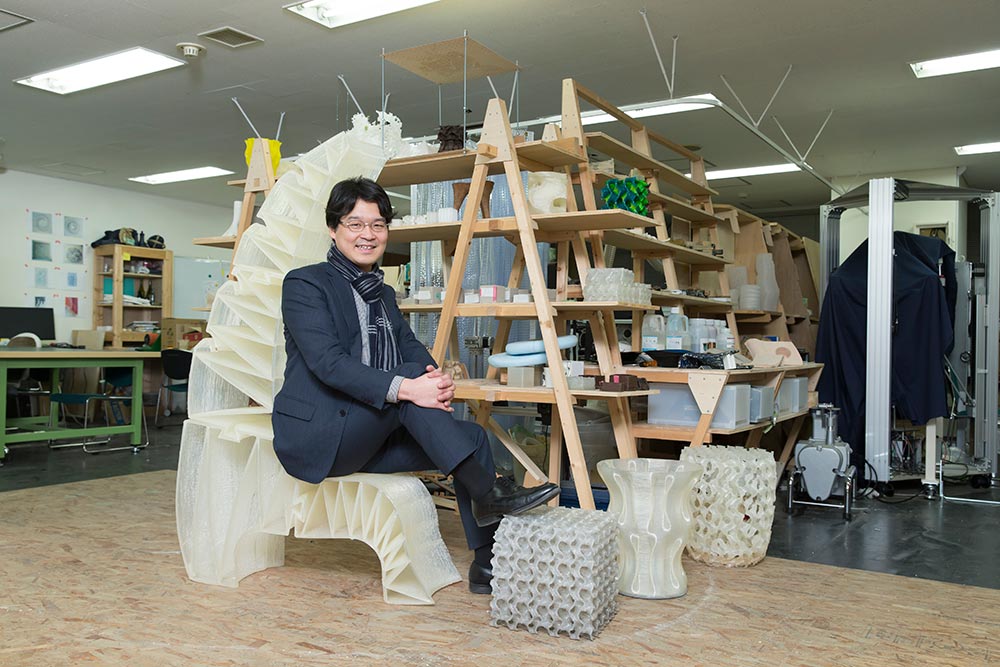
It’s expected that Japan’s joint problem of low birthrates and an aging population will continue. By 2030, it’s predicted that 1/3 of the population will be elderly, and 1/3 of houses will be vacant. This is why methods for renovating and reforming existing buildings, from the perspectives of both architecture and urban planning, are a particularly important theme for Japan.
During the Edo Period, Japanese people would attempt to mend broken objects, and trying to use an item for as long as possible was seen as normal. It was for this reason that a huge repair industry existed, providing services such as mending torn paper lanterns, keys, or even mending holes in cooking pots.
It was the same for shared facilities in communities. For instance, if the aqueduct in a village broke, the local people would come together to discuss the problem, share their knowledge, and work out the best materials and methods for mending it.
If there was a large-scale FabLab near your house that contained the architectural-sized ArchiFab 3D printer that we are currently developing at our lab, what do you think would happen? If children, adults, and the elderly could come together to learn how to use fabrication devices, and test different variations for making things, could it possibly lead to a style of living where items of value were fixed, improved, or changed, instead of just being disposed of?

The large-scale architectural 3D printer “ArchiFAB” (pictured on the left) is 2.3 m tall, making it the second largest 3D printer in Japan. It was jointly developed at Professor Tanaka’s research lab with the architectural firm Takenaka Corporation. The printer is capable of producing objects that can fit with in a tube that is approximately 50 cm tall and 1.3 m in diameter. The printer itself can be taken apart, allowing it to be easily transported to where it is needed.
From 2018 our lab will be focusing on technological research aimed towards the next evolution of 3D printing, known as 4D printing. 4D printing involves materials that have the ability change shape, change functionality according to the season, self-repair, or fit themselves to humans. Making this a reality means first creating the necessary environment to allow us to tackle the goal from 2 separate directions. The first direction will involve performing materials experiments based around physics and chemistry. The second will involve using the power of AI and calculation simulations to perform complex computational modeling that is impossible for humans to do alone.
Many aspects of this still need to be researched, but if we continue down this path, we should be able to achieve our goal of having “a FabLab in every community” by 2030. In order to resolve the joint issues of a declining birth rate and aging population, it’s important to totally redesign environments, by looking at everything from individual products, to mobility, architecture, and communities, from a cross-perspective. If design is performed at the level of an individual community, and the necessary adaptations are made, FabLabs will evolve to become “Community Station Workshops” that maintain their communities.
This means that even if a house is damaged, or requires structural alterations, it will be possible for the individuals that inhabit it to do this themselves. In the same way, if shared public facilities such as parks and schools need repairing, the community can come together to do this. From an outside perspective, this will mean that the innate ability of humans to “spontaneously recover” will once more become a part of the communities we live in. “FabTown Kamakura Plan,” a recent collaboration between FabLab Kamakura and KAYAC Inc., could be the beginning of this trend.
In a future in which these kinds of methods have spread throughout Japan, 4D printing that print smart materials will be the most important foundational technology that will need to be introduced into FabLabs. If 4D printing that incorporate information about changing times and states into materials become as typical as 2D and 3D printing, it will surely lead to the creation of entirely new objects that fall into the gap between man-made and natural items. This in itself may lead to the creation of a society that deeply incorporates spontaneous recovery. I believe that this is the kind of “nostalgic future” that we are heading towards.
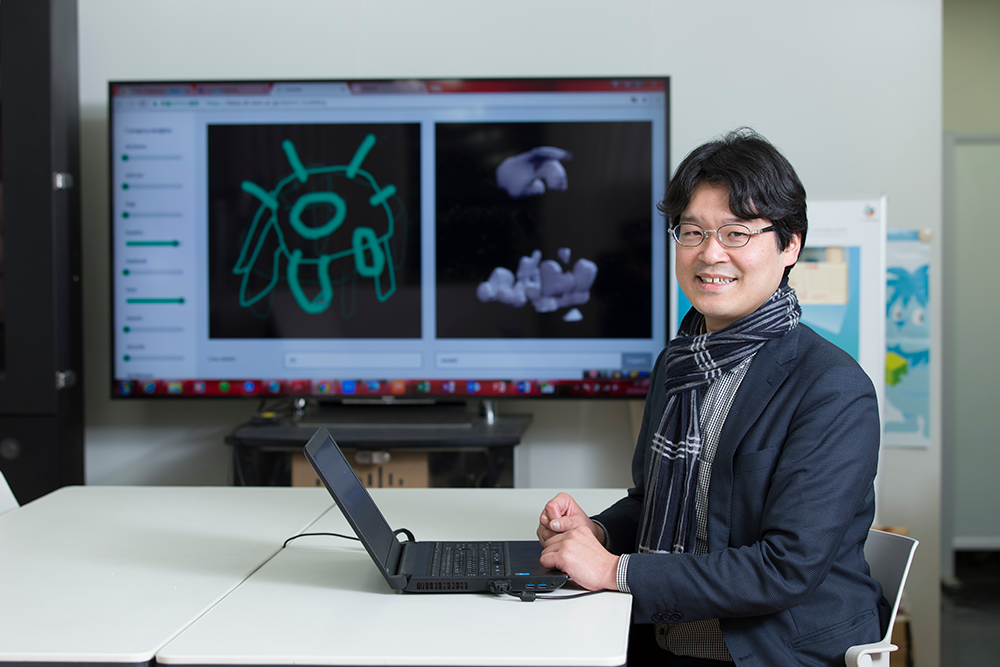
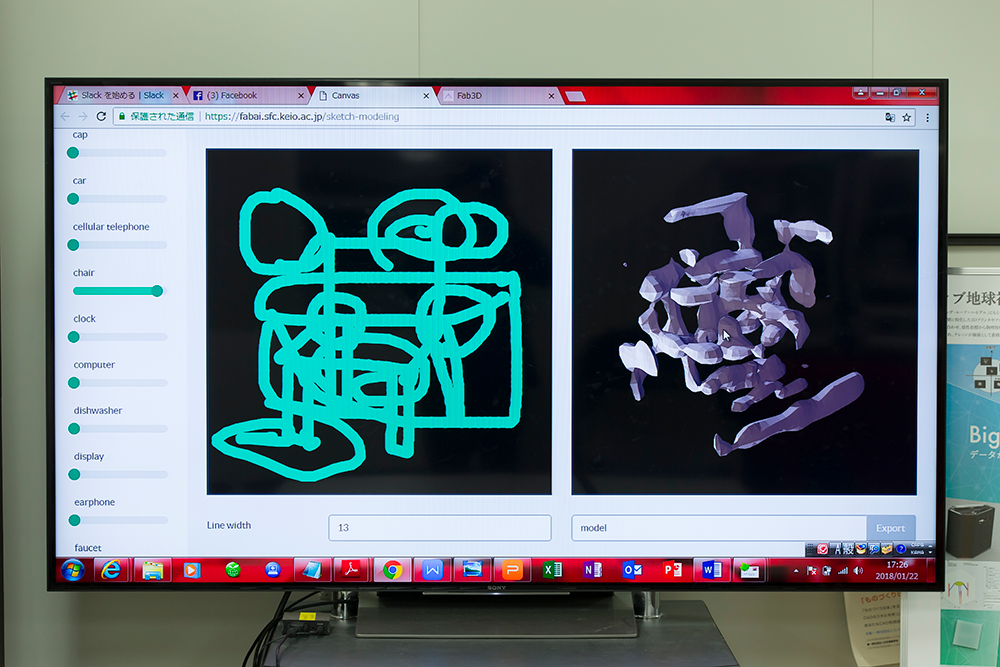
In order to produce a 3D object from a 3D printer, a method is required to make 3D models. This photo shows a system for easily producing 3D models from hand-drawn sketches. If the desired object is drawn in 2D (left-hand side of monitor) the AI will display a 3D representation of what it thinks you are trying to create (right-hand side of monitor). A continued dialog between the human and the AI will lead to the creation of the desired object.

Hiroya Tanaka
Professor, Faculty of Environment and Information Studies, Keio University. Graduated from Faculty of Integrated Human Studies, Kyoto University. Completed the Doctoral Program at School of Engineering, the University of Tokyo. In 2005, became Assistant Professor, Faculty of Environment and Information Studies, Keio University. In 2008, became Associate Professor at the same faculty. Started working in current position from 2016. Became Executive Director, Keio Research Institute at SFC from 2017. Ph.D. (Engineering). Specializes in Digital Fabrication.

2018.Mar ISSUE